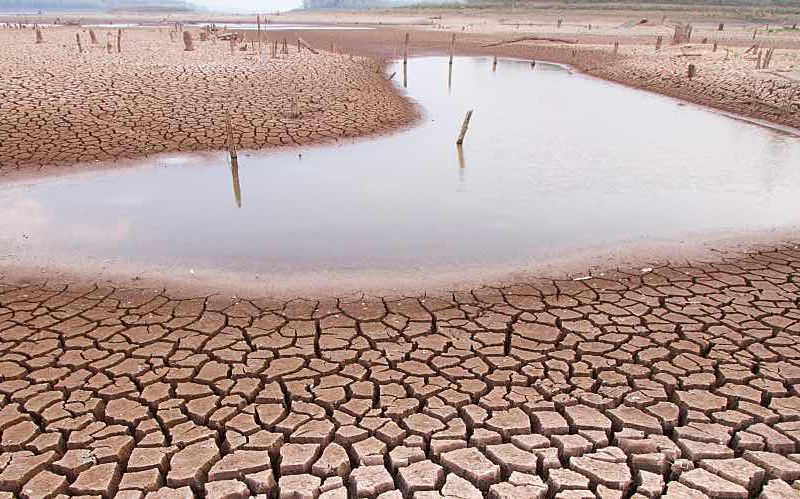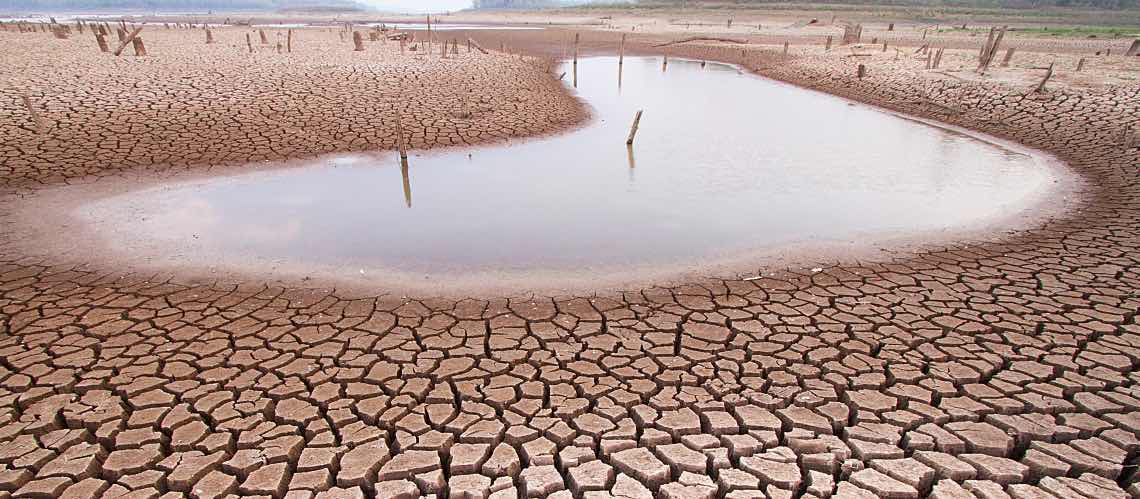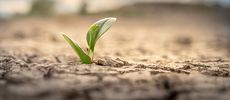Snow Droughts Impact Water Quality in Midwest and Southwest


Believe it or not, damaging droughts aren't simply caused by a lack of rain. During the winter of 2020-2021, the U.S. Midwest and Southwest experienced a significant lack of snow. By March, nearly half of the continental U.S. was already in a moderate-to-severe drought that has only grown worse. The drought stretches from the Pacific Coast to the Great Plains and the upper Midwest. The dry conditions have serious implications for drinking, livestock, and irrigation water quality and testing.
Snowpack Basics
Snow drought occurs due to abnormally low snowpack, or the seasonal accumulation of slow-melting packed snow. This can be brought on by warm or dry conditions. Warm conditions cause snow to fall as rain, so little water is stored as snowmelt for later months. Dry conditions mean less precipitation than normal.
Think of snowpack as another water reservoir — but only when there's enough snow to actually store the water and then slowly release it. The western states, in particular, rely on snowpack as a water source for the entire ecosystem, according to National Geographic. Little snow, or fast release, impacts irrigation, fisheries, vegetation, wildfires, and municipal water supplies.
Due to climate change, this condition is likely to become a common occurrence. With the onslaught of warming temperatures, snowpack depth, or density, changes and reduces the amount of water retained.
Snowfall Drought
This doesn't bode well for regions with limited water supplies. If you're wondering how drought-prone your own state is, check the map compiled by the National Integrated Drought Information System (NIDIS).
Last winter, the lack of storms and precipitation meant a lower snowpack than usual. Conditions grew more dire after April 1, when warm, dry weather hit the Midwest and Southwest. The snowpack never reached the depths needed to provide summer water. The snowpack that did exist melted early. In the Sierra Nevada Mountains, for instance, the snowpack disappeared three to four weeks early, according to NIDIS. Dry conditions also mean that water simply runs off the land instead of seeping in and recharging water reservoirs.
Drinking Water Issues
Going into the summer of 2021, a drought created water management issues in many states, including California. There, the East Bay Municipal Utility District (EBMUD), which normally gets water from the Pardee Reservoir, 90 miles east of the service area, couldn't rely on water from the Sierra Nevada snowmelt. Instead, the EBMUD had to rely on local reservoirs. Unfortunately, this changes the mineral content of the water, making it saltier, and increases the likelihood that algal blooms will give the water a musty taste and odor. Treatment plants can help with the odor but cannot remove the minerals.
Like most utilities, EBMUD diligently protects water quality, including testing water samples, in the lab and field. In total, the utility conducts more than 20,000 annual lab tests for everything from pesticides and herbicides to microorganisms and asbestos, lead, and copper to treatment byproducts. Daily testing ensures customers receive high-quality drinking water that meets federal and state standards.
Private well owners are not immune from these concerns. Droughts may cause wells to run dry or increase the concentration of undesirable substances. A recent United States Geologic Survey study showed that drought may lead to unsafe levels of naturally occurring arsenic, which could put 4.1 million U.S. well owners at risk. Arsenic increases the risk of cancers, developmental impairments, cardiovascular diseases, and adverse birth outcomes.
In drought-prone areas, water testing labs should make sure customers with private wells understand the risks and take annual and seasonal water testing seriously.
Livestock Health
Droughts impact rangeland and winter pasture as well, reducing water for livestock and crops and raising levels of salt, minerals, and bacteria.
In North Dakota, the University Extension Service recommends livestock producers test water quality before turning livestock out to pasture as this directly impacts livestock health and can cause illness and death, in some circumstances. Waters that contain nutrients intended for feed crops can also nurture harmful algal blooms. Those that contain blue-green algae can be deadly to both livestock and wildlife.
Extension Service toxicologists recommend water sources be tested regularly for total dissolved solids, sulfates, and nitrates.
Emphasis on Health and Safety
With droughts rampant throughout a large swath of the U.S., water testing labs can serve as a trusted source of information on how the drought conditions affect their clients. Whether your customers are municipalities, private well owners, or ranchers, you can help them monitor water quality and stay vigilant to protect against the harmful health impacts of drought.






